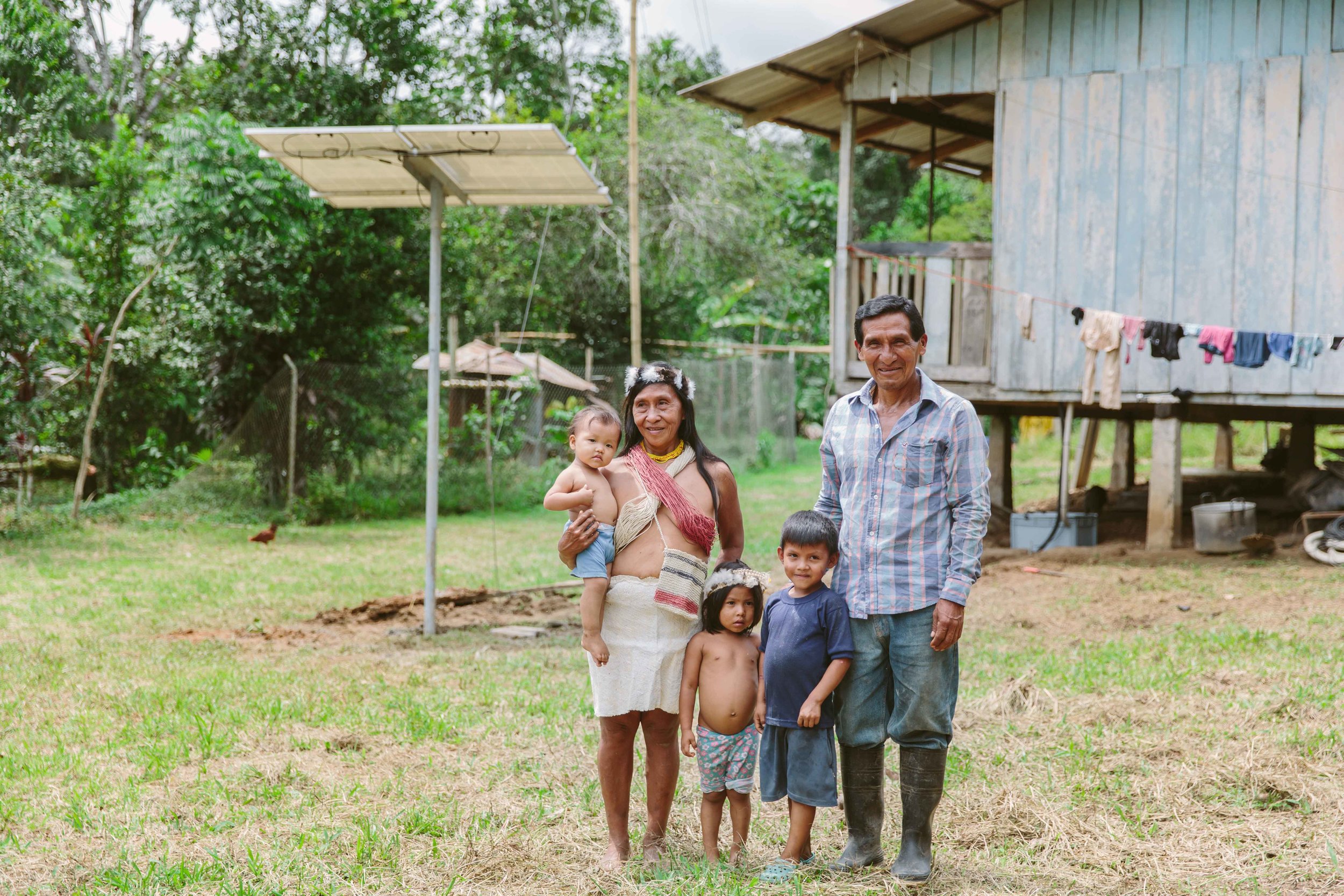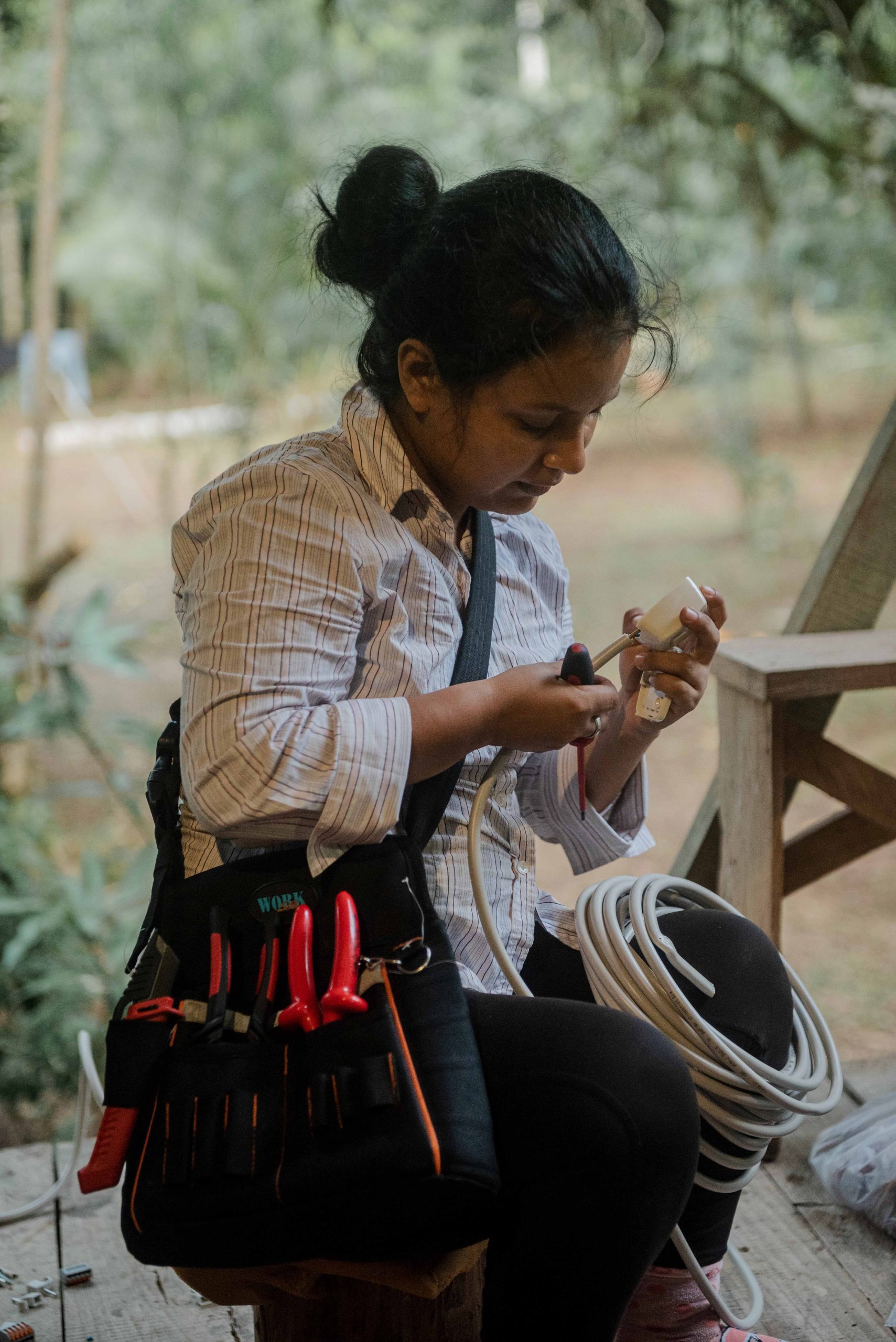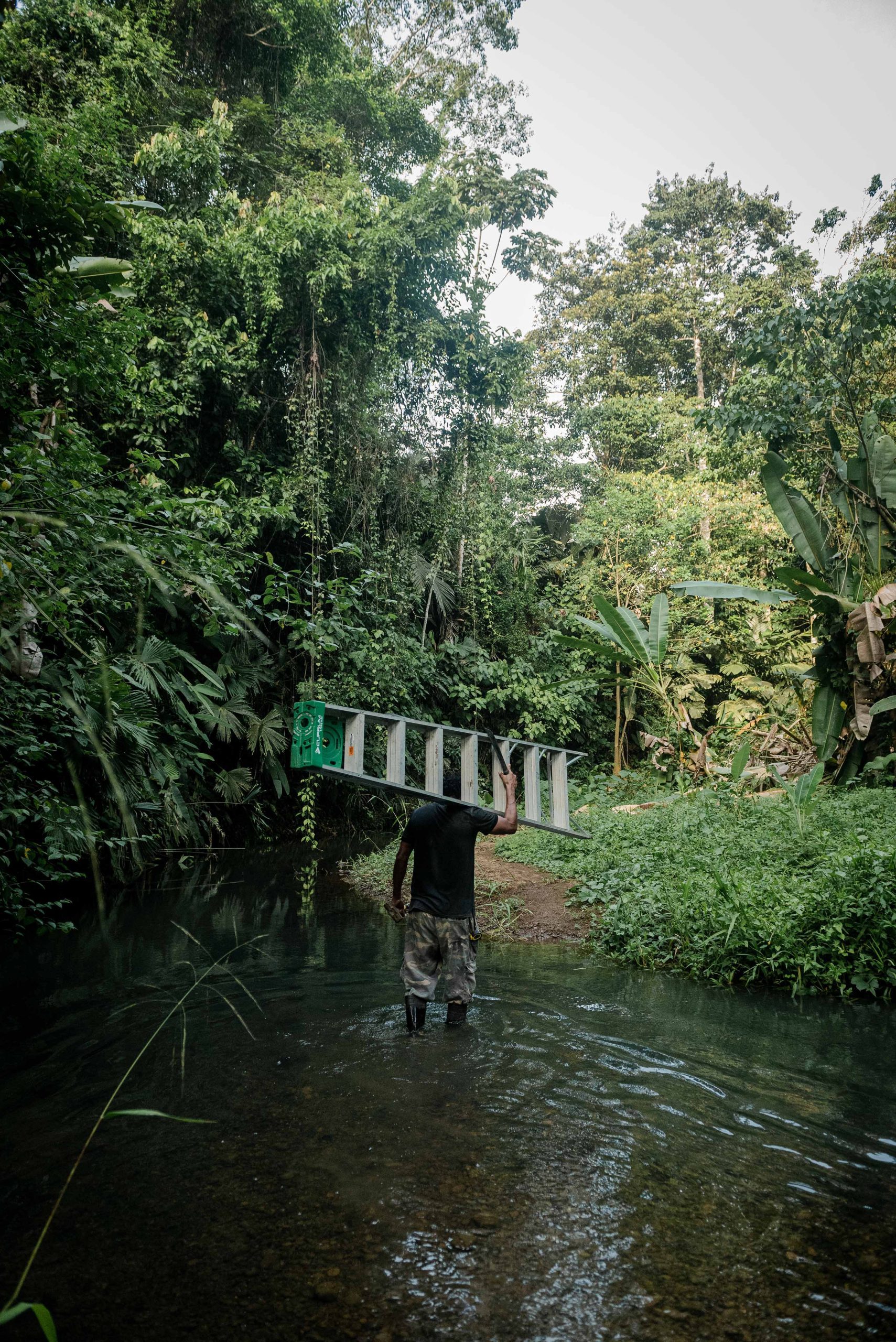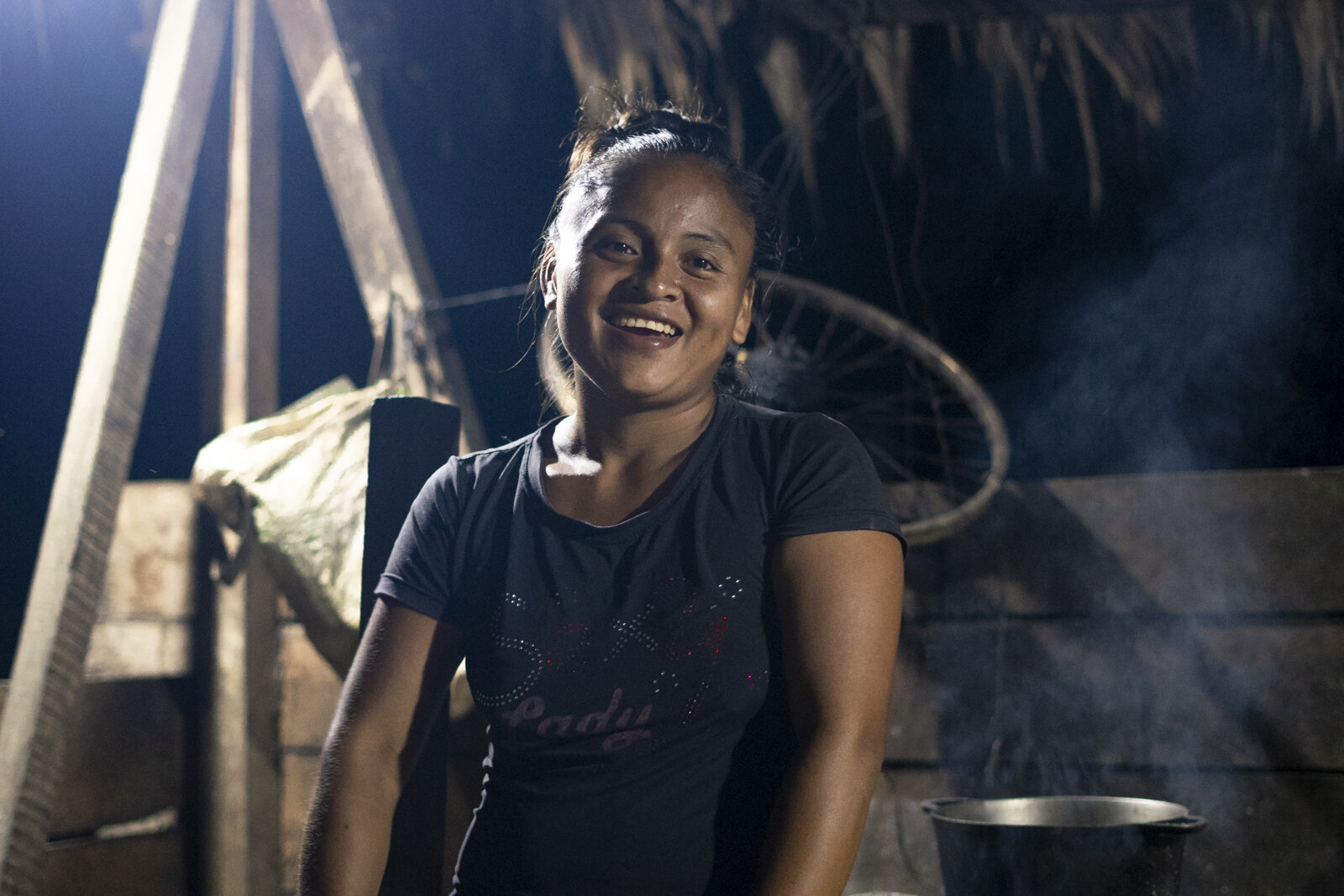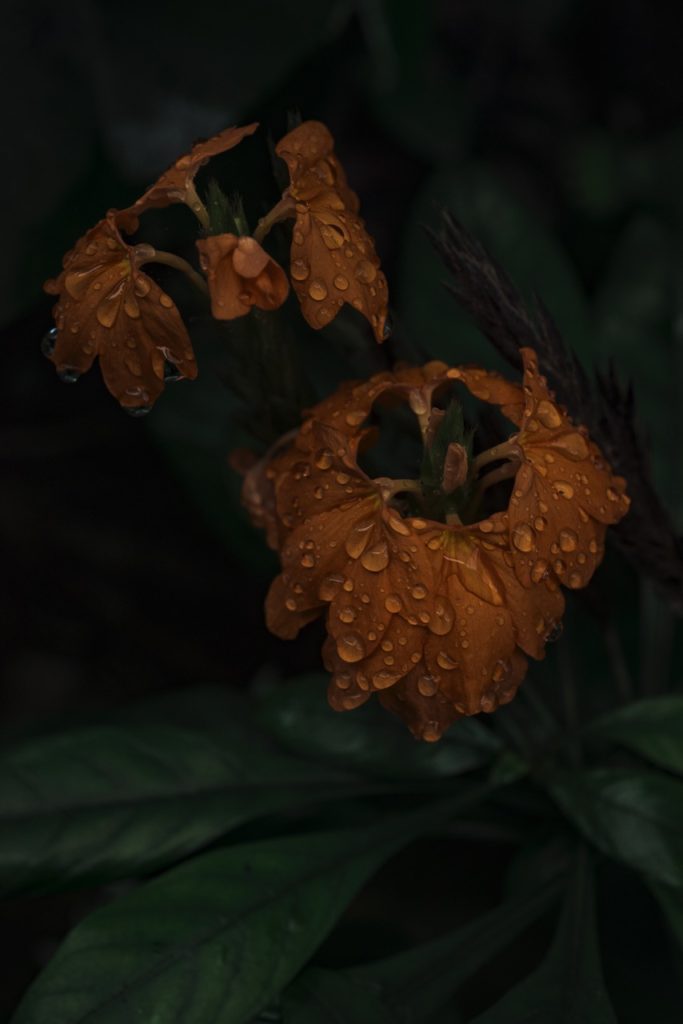Go to Page
Currently on this Page
Drag or Click
Download
Go to Website
Scroll Down
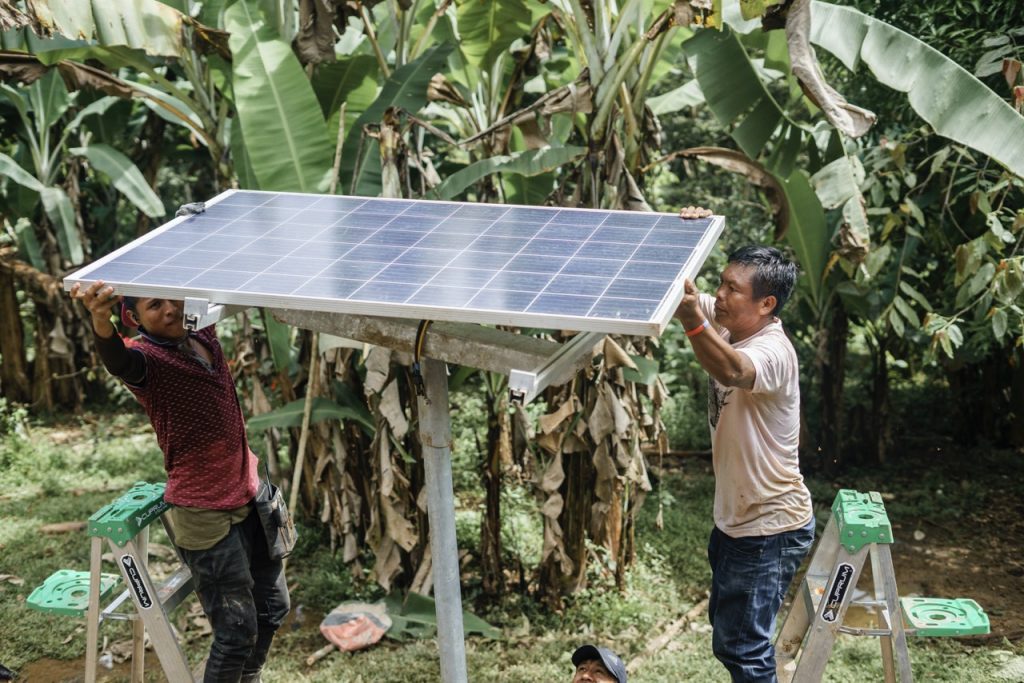
Clean and just energy for all
Area of Impact
Solar Energy Access

We empower Indigenous families living in remote rainforest areas by creating access to clean, sustainable and independent solar energy through building local capacities and infrastructures.
What we do
Install off-grid solar home systems
We create clean, sustainable and independent access to solar energy for last-mile Indigenous communities through the design and installation of complete, off-grid and contextually appropriate solar home systems.
Build local technical expertise
We are committed to generating long term impact, empowerment and sustainability. We build and strengthen local technical capacity by training local technicians and trainers of trainers to design, install, and maintain decentralized, high-quality solar energy solutions.
Create off-grid solar infrastructures
We create learning, training and storage infrastructures at local, organizational and regional level. These infrastructures equip communities with the knowledge, space and tools for creating and sustaining clean and just access to solar energy.
Our Impact
We have solar-powered over 60 rainforest communities in 12 Indigenous territories across 5 countries
695
Solar home systems installed
3.500 +
People directly empowered with independent energy access
55
Indigenous solar technicians trained
Where we work
We operate in the following countries: Ecuador, Costa Rica, Colombia, Peru and Panama.
Legenda
Central & South America
Indigenous Nations
Cabécar
Bribri
Emberá
Siona
A’í Cofán
Secoya-Siekpia
Amazonian Kichwa
Shuar
Rainforests
La Amistad International Park
Darien Rainforest
Amazon Rainforest
Legenda
Costa Rica & Panama
Indigenous Nations
Cabécar
The Cabécar people are the second largest Indigenous group in Costa Rica numbering around 14,000 people. Living mostly in remote rainforest areas, their relative isolation has allowed the Cabécar to maintain their culture, traditions, and spiritual identity, which is centered around their relationship with the forest.
Bribrí
The Bribrí are one of Costa Rica’s largest Indigenous nations, number around 10,000 people, and and live in the Talamanca mountain range forest. They are well known for their rich artistic and musical traditions and are one of the few matrilineal societies in the world, where land traditionally is passed from mother to daughter.
Rainforests
La Amistad International Park
La Amistad Tropical Rainforest is located in Costa Rica and Panama and covers around 14,991 km2. In Costa Rica it is also known as Talamanca rainforest and is considered the largest and most biologically diverse protected wild area, due to its wide range of altitudes, climatic variations, and variety of soils.
Legenda
Panama
Indigenous Nations
Emberá
The Emberá people live in Panama and western Colombia and number around 50,000 people in Colombia and 33,000 in Panama. The Emberá are a riverine people who despite their experiences of forced displacement have preserved a strong cultural and spiritual connection to the rivers and celebrate their rich cultural identity.
Rainforests
Darien Rainforest
The Darien Tropical Rainforest, located in eastern Panama and bordering Colombia, covers an area of 579,000 hectares. It is the largest protected natural area in Central America. It is also known for the Darien Gap, with deep wilderness and extreme biodiversity, where the Pan-American Highway is interrupted.
Legenda
Colombia, Ecuador, Peru
Indigenous Nations
Siona
The Siona, numbering around 400 people, live along the Putumayo River and its tributaries in the Amazon regions of Colombia and Ecuador. They are also known as Zio Bain, “people who cultivate the land”.
A’í Cofán
The A’i Cofán, descendants of ancient riverine people, today number around 2,100 people. They live between the Aguarico River in the northern Amazon region in Ecuador and the Guamés River in southern Colombia.
Waorni
The Waorani people, numbering around 2,000, have largely retained their cosmovision and continue to be known as skilled warriors and defenders of Nature living in the eastern Amazon region of Ecuador.
Secoya-Siekpia
The Secoya-Siekopai, numbering around 1,600 people, live in the Amazonian regions of Peru and Ecuador. They have great ancestral wealth, shamanic wisdom and a profound knowledge of medicinal plants.
Amazonian Kichwa
The Kichwa people of the Amazon are the most populous Indigenous group in the Ecuadorian Amazon, with smaller groups living across the Colombian and Peruvian borders.
Shuar
The Shuar, who are well-known for their hunting skills, live in tropical rainforest between the Andes mountain range and the Ecuadorian and Peruvian Amazonian region.
Rainforests
Amazon Rainforest
The Amazon Rainforest, the largest on Earth, spanning approximately 5.5 million km2 across nine South American countries. Beyond its immense biodiversity, the Amazon rainforest plays a crucial role in regulating global water cycles and the climate.

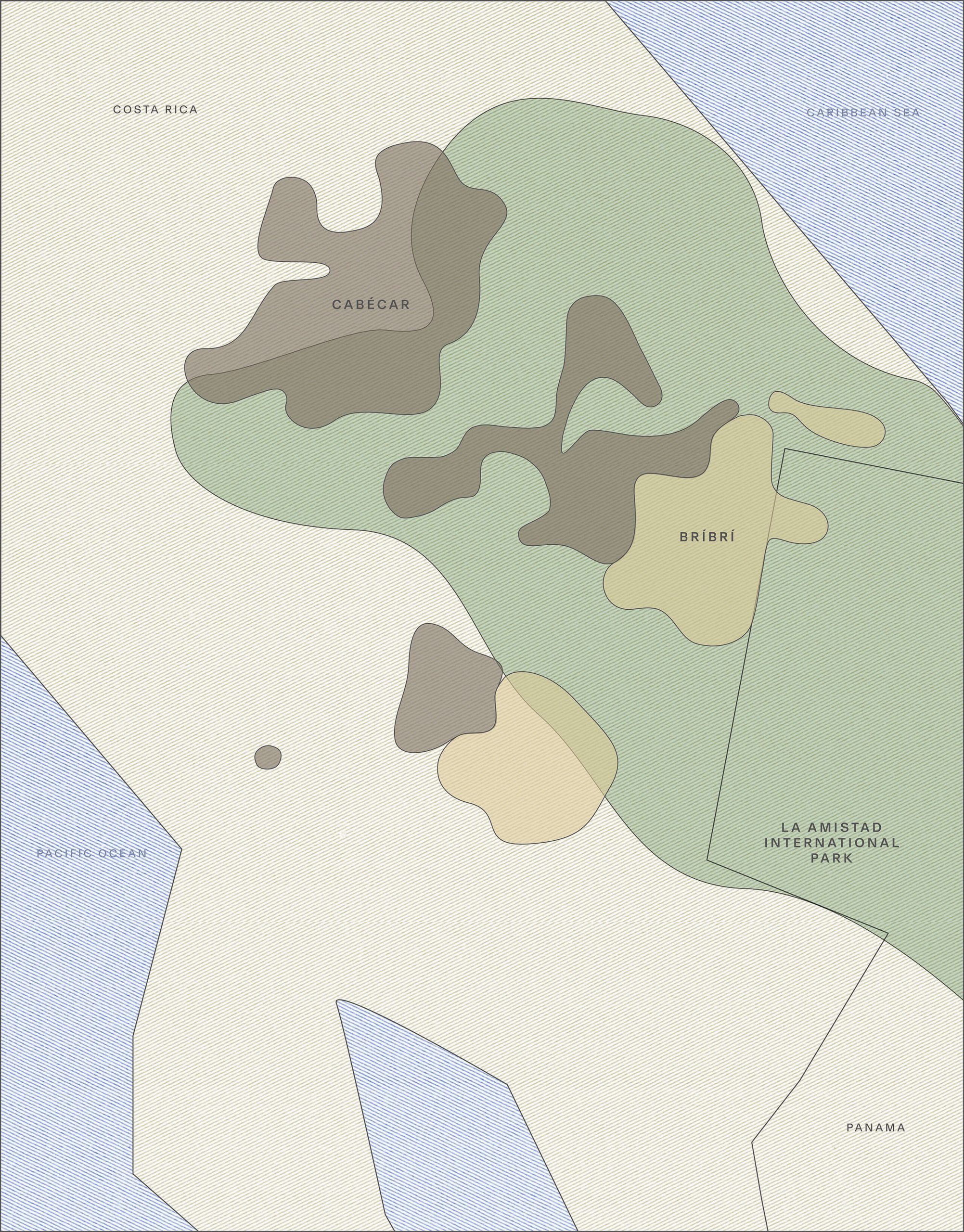
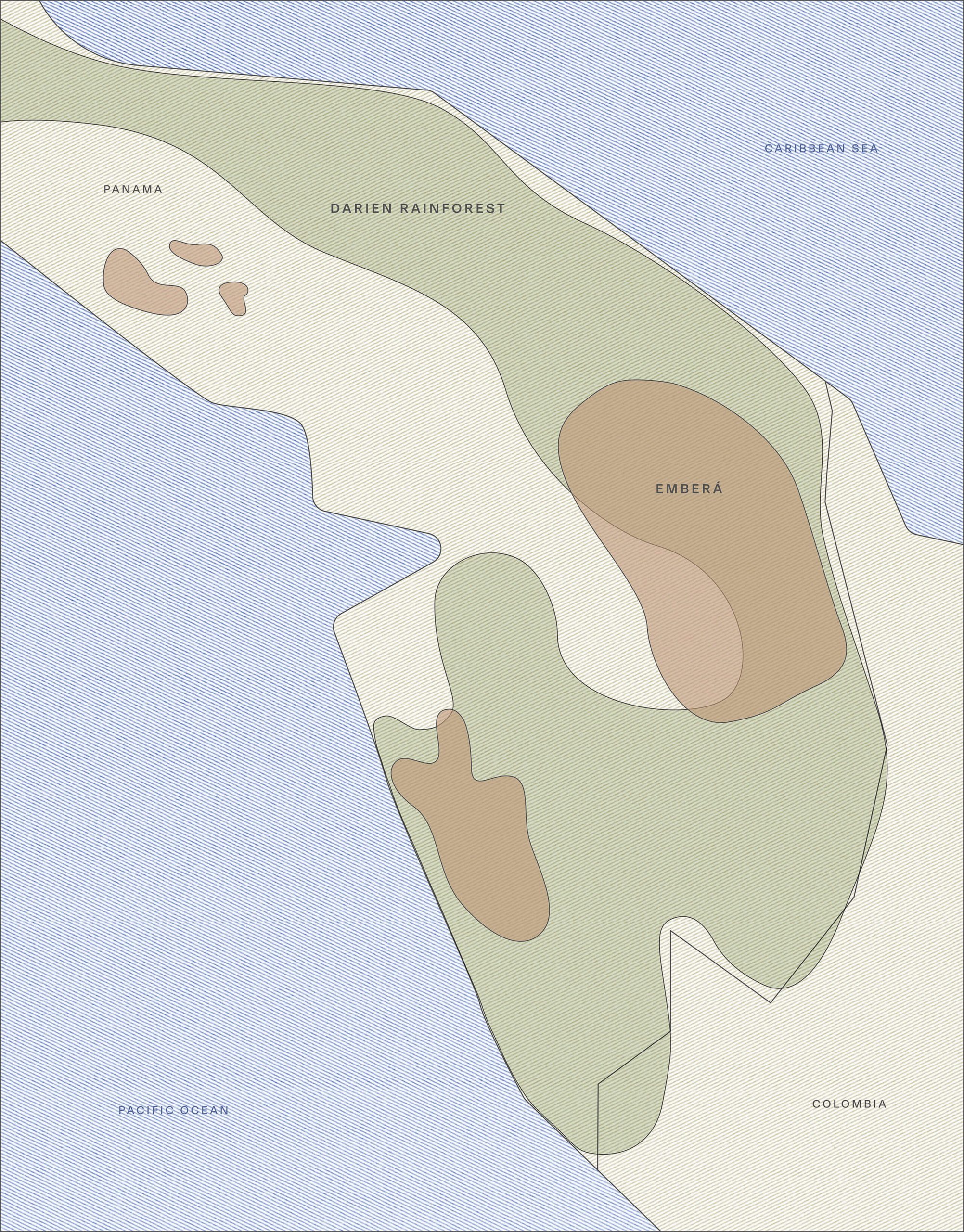

To Main Map
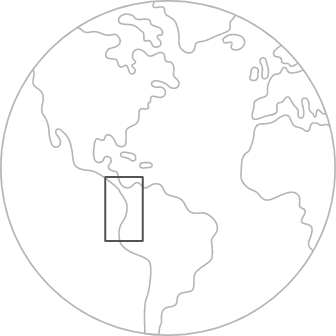
This map shows the territories of the Indigenous Nations in Latin America, with whom we work. Boundaries are approximate and not guaranteed to be error-free or officially recognized by respective governments.

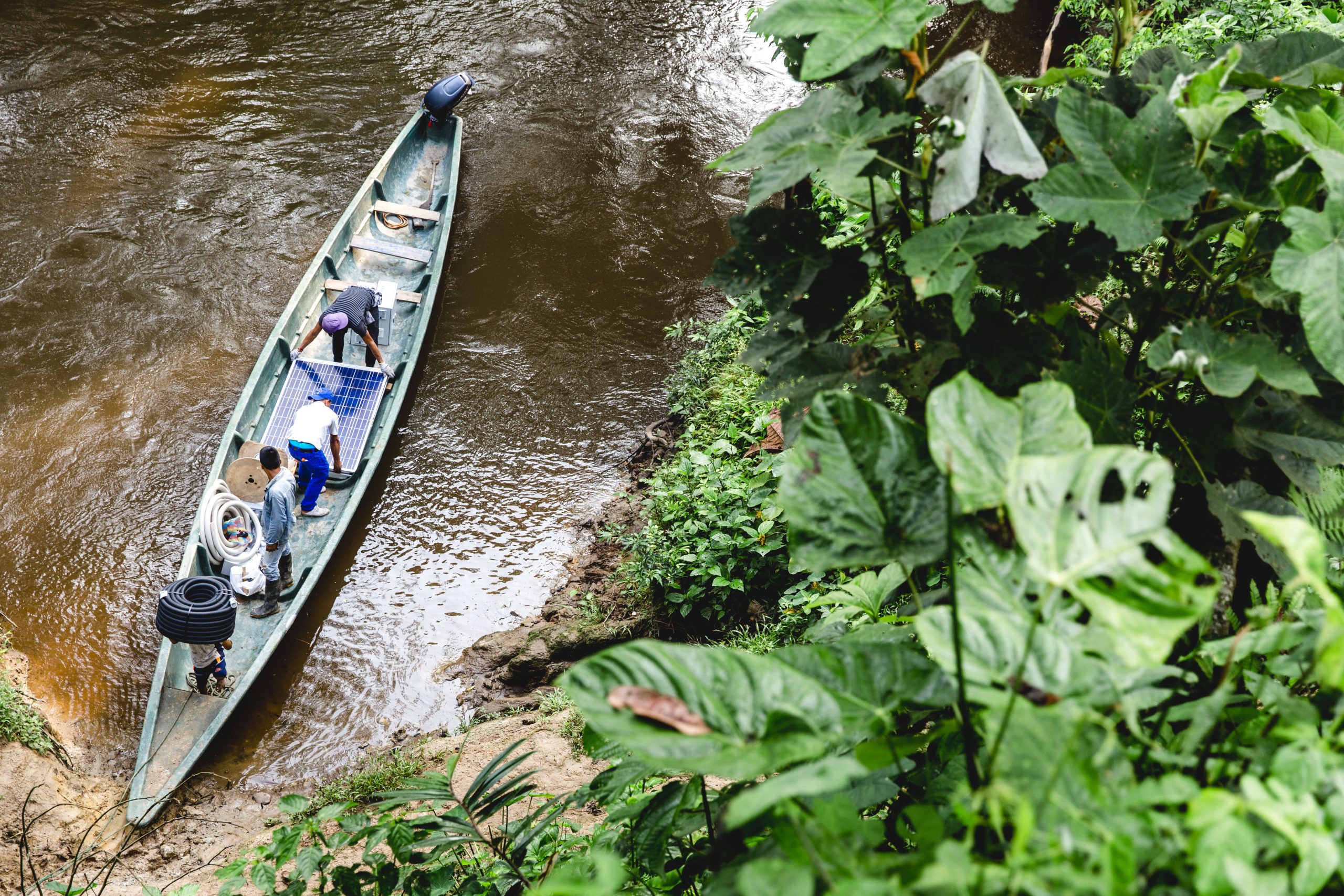
Explore our
Areas of Impact
Areas of Impact


